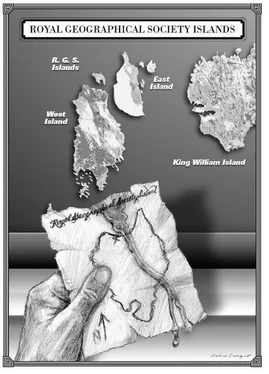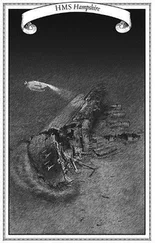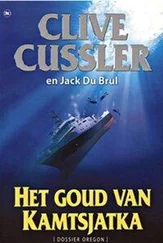The Arctic oceanographer trudged through ankle-deep snow toward the radio shack. Over the blowing rustle of ice particles bounding across the ground, he heard the whine of a diesel engine revving up and down. Looking past the camp’s structures, he spotted a yellow front-end track loader racing back and forth, its blunt blade piling up high mounds of drifted snow. The plow was keeping clear a five-hundred-foot ice runway that stretched along the back of the camp. The crude landing strip was the camp’s lifeline, allowing Twin Otters to bring in food and supplies on a weekly basis. Bue made sure that the makeshift runway was kept clear at all times.
Ignoring the roving track loader, Bue entered the joint lab and radio hut, shaking the snow off his feet in an inner doorway before entering the main structure. Making his way past several cramped bays full of scientific journals and equipment, he turned into the closet-sized cubby that housed the satellite radio station. A wild-eyed man with sandy hair and a mirthful grin looked up from the radio set. Scott Case was a brilliant physicist who specialized in studying solar radiation at the poles. Like everyone else in the camp, Case wore multiple hats, including that of chief communications operator.
“Atmospherics are playing havoc with our radio signals again,” he said to Bue. “Satellite reception is nil, and our ground transmitter is little better.”
“I’m sure the approaching storm isn’t helping matters any,” Bue replied. “Does Tuktoyaktuk even know that we are trying to hail them?”
Case shook his head. “Can’t tell for sure, but I’ve detected no callbacks.”
The sound of the track loader shoving a load of ice just outside the structure echoed off the thin walls.
“You keeping the field clean just in case?” he asked Bue.
“Tuktoyaktuk has us scheduled for a supply drop later today. They may not know that we’ll be in the middle of a gale-force blizzard in about an hour. Keep trying, Scott. See if you can wave off the flight for today, for the safety of the pilots.”
Before Case could transmit again, the radio suddenly cackled. An authoritative voice backed by static interference blared through the speaker.
“Ice Research Lab 7, Ice Research Lab 7, this is NUMA research vessel Narwhal . Do you read, over?”
Bue beat Case to the transmitter and replied quickly. “ Narwhal , this is Dr. Kevin Bue of Ice Research Lab 7. Go ahead, please.”
“Dr. Bue, we’re not trying to eavesdrop, but we’ve heard your repeated calls to the Coast Guard station at Tuktoyaktuk, and we’ve picked up a few unanswered calls back from Tuktoyaktuk. It sounds like the weather is keeping you two from connecting. Can we assist in relaying a message for you?”
“We’d be most grateful.” Bue had the American ship forward a message to Tuktoyaktuk to delay sending the supply plane for twenty-four hours on account of the poor weather. A few minutes later, the Narwhal radioed a confirmation back from Tuktoyaktuk.
“Our sincere thanks,” Bue radioed. “That will save some poor flyboy a rough trip.”
“Don’t mention it. Where’s your camp located, by the way?”
Bue transmitted the latest position of the floating camp, and the vessel responded in kind.
“Are you boys in good shape to ride out the approaching storm? Looks to be a mean one,” the Narwhal radioed.
“We’ve managed everything the Good Witch of the North has thrown at us so far, but thanks all the same,” Bue replied.
“Farewell, Ice Lab 7. Narwhal out.”
Bue set down the transmitter with a look of relief.
“Who says the Americans don’t belong in the Arctic after all?” he said to Case, then slipped on his parka and left the building.
* * *
Thirty-five miles to the southwest, Captain Bill Stenseth examined a local meteorological forecast with studious concern. An imposing man with Scandinavian features and the build of an NFL linebacker, Stenseth had weathered storms in every ocean of the world. Yet facing a sudden blow in the ice-studded Arctic still made the veteran captain of the Narwhal nervous.
“The winds seem to be ratcheting up a bit in the latest forecast,” he said without looking up from the document. “I think we’re in for a pretty good gale. Wouldn’t want to be those poor saps hunkered down on the ice,” he added, pointing toward the radio.
Standing beside Stenseth on the ship’s bridge, Rudi Gunn suppressed a pained grin. Sailing through the teeth of a powerful Arctic storm was going to be anything but pleasant. He would gladly trade places with the ice camp members, who would likely sit out the storm in a warm hut playing pinochle, Gunn thought. Stenseth’s preference for battling the elements at sea was clearly the mark of a lifelong sailor, one who never felt comfortable with his feet on the shore.
Gunn shared no similar propensity. Though he was an Annapolis graduate who had spent several years at sea, he now spent more time sailing a desk. The Deputy Director for the National Underwater and Marine Agency, Gunn was usually found in the headquarters building in Washington, D.C. With a short, wiry build and horn-rimmed glasses on his nose, he was the physical opposite of Stenseth. Yet he shared the same adventurous pursuit of oceanographic challenges and was often on hand when a new vessel or piece of underwater technology was sea-tested for the first time.
“I’d have more pity for the polar bears,” Gunn said. “How long before the storm front arrives?”
Stenseth eyed a growing number of whitecaps cresting off the ship’s bow. “About an hour. No more than two. I would suggest retrieving and securing the Bloodhound within the next thirty minutes.”
“They won’t like returning to the kennel so soon. I’ll head down to the operations room and pass the word. Captain, please let me know if the weather deteriorates any sooner than predicted.”
Stenseth nodded as Gunn left the bridge and made his way aft. The two-hundred-foot research ship was rolling steadily through a building sea, and Gunn had to grasp a handrail several times to steady himself. Nearing the stern, he looked down at a large moon pool cut through the vessel’s hull. Surface water was already sloshing back and forth, spilling onto the surrounding deck. Stepping down a companionway, he entered a door marked LAB, which opened up into a large bay. At the far end was a sectioned area with numerous video monitors mounted on the bulkhead. Two technicians sat tracking and recording a data feed from underwater.
“Are they on the bottom?” Gunn asked one of the technicians.
“Yes,” the man replied. “They’re about two miles east of us. Actually crossed the border into Canadian waters, as a matter of fact.”
“Do you have a live transmission?”
The man nodded and passed his communication headset to Gunn.
“ Bloodhound , this is Narwhal . We’re seeing a rapid deterioration in the weather conditions up here. Request you break off survey and return to the surface.”
A long pause followed Gunn’s transmission, and then a static-filled reply was heard.
“Roger, Narwhal ,” came a gruff voice with a Texas accent. “Breaking off survey in thirty minutes. Bloodhound , over and out.”
Gunn started to reply, then thought better of it. It was pointless to argue with the pair of hardheads at the other end, he thought. Yanking off the headset, he silently shook his head, then sank into a high-back chair and waited for the half hour to pass.
Like the canine it was named for, the Bloodhound scoured the earth with its nose to the ground, only the ground was two thousand feet beneath the surface of the Beaufort Sea and its nose was a rigid electronic sensor pod. A titanium-hulled two-man submersible, the Bloodhound was purpose-built to investigate deepwater hydrothermal vents. The submerged geysers, which spewed superheated water from the earth’s crust, often spawned a treasure trove of unusual plant and sea life. Of greater interest to the men in the NUMA submersible were the potential mineral deposits associated with many hydrothermal vents. Discharged from deep under the seabed, the vents often spewed a mineral-rich concoction of small nodules containing manganese, iron, and even gold. Advances in underwater mining technology made the thermal vent fields potentially significant resources.
Читать дальше












